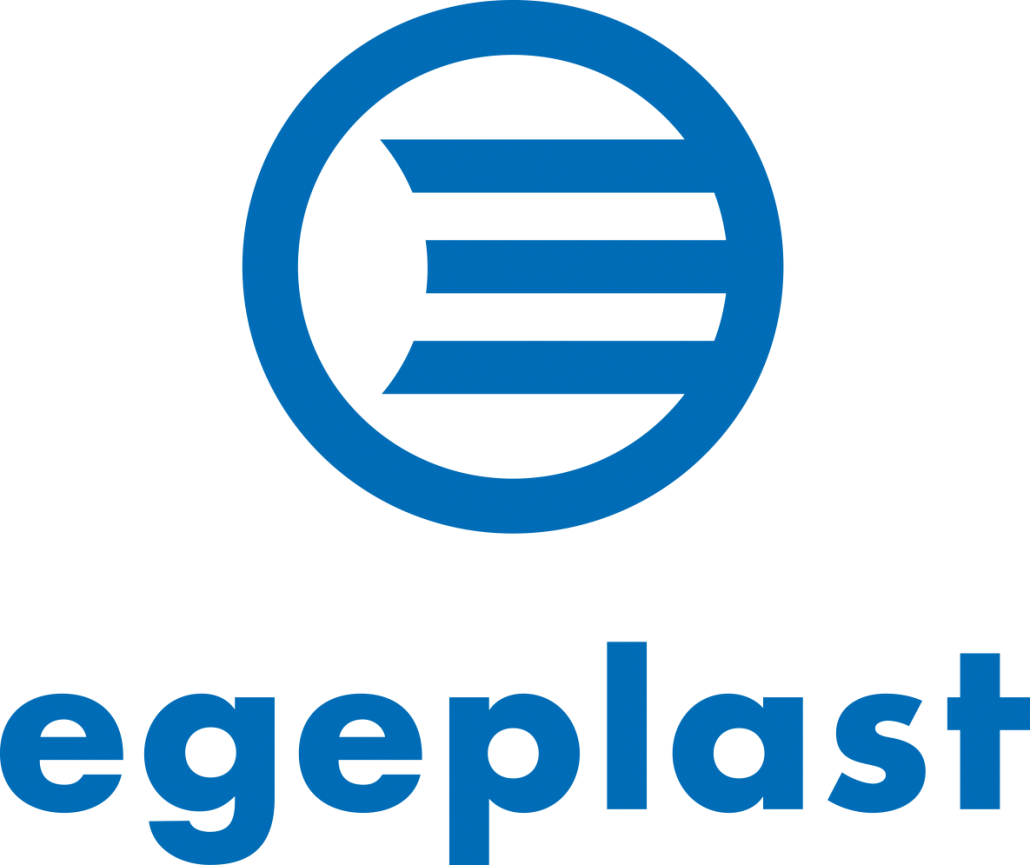Quality assurance
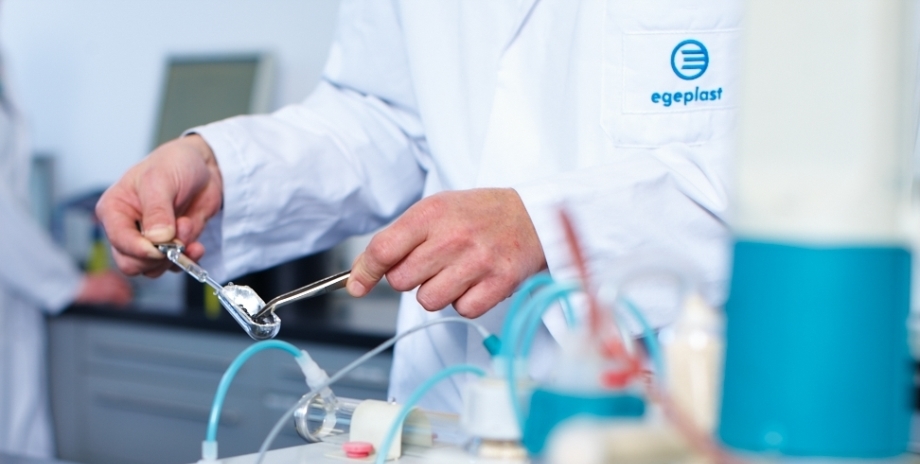
Before we start production, the raw materials pass through a stringent receiving inspection in our in-house test laboratory. Interim tests are also conducted during production, and process control plays an important role in our test system.
- Continuous ultrasonic wall thickness measurement
- Creep tests, such as the internal pressure creep rupture test
- Melt flow ratio measurement (MFR)
- Coulometrical determination of water based on the Karl-Fischer method
- Thermal stability / OIT
- Heat treatment
- Homogeneity
- Loss on drying
- Dimensions / Labelling / Colour
- Surface condition
- Impermeability
- Tensile properties
- Backlight test
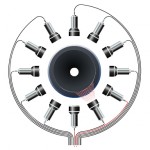 |
Continuous ultrasonic wall thickness measurement During the whole manufacturing process the pipes are continuously monitored by ultrasonic sensors. |
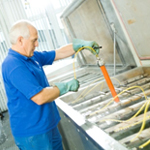 |
Creep tests, such as the internal pressure creep rupture test The pipe samples are checked at a temperature level of 80 degrees under a specific pressure in a water quench. Thus, the durability of batches can be proved. |
 |
Quality standard for MFR / MVR melt index We test the material flow behaviour upon receiving the raw material and after manufacture. Under defined test conditions, we ascertain the volume of material that flows through a standardised nozzle in a ten-minute measurement period. The MFR value may only differ by max. 0.2 g per ten minutes between the raw material and the finished pipe. |
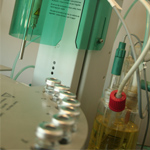 |
Coulometrical determination of water based on the Karl-Fischer method The specimen is tempered in an oven. The water vapour is dumped into a measuring cell with the Karl-Fischer-solution via nitrogen. The water reacts with the solution and is titrated electronically. Contrary to the moisture determination the Karl-Fischer method specifies the water. |
 |
Quality standard for thermal stability / OIT Upon receipt of the raw material and during the final product check, we ascertain the thermal stability / OIT (oxidation induction time) of the material using DSC measurements that measure the difference in thermal flow. To this end, we heat a specimen under an inert atmosphere (nitrogen) to a specific temperature above the melt temperature. After switching to an oxidative atmosphere (oxygen), we determine the time it takes for an exothermal oxidation reaction (OIT) to occur. At a test temperature of 200 ?C, the OIT value must be greater than 20 minutes. |
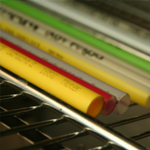 |
Quality standard for heat treatment Here, we test the finished pipe for internal stresses. Our laboratory applies measuring marks to predetermined pipe sections in the axial pipe direction and stores these under standardised test conditions in a heat cabinet. After cooling, the change in length between the measuring marks may not exceed 3 percent. |
 |
Quality standard for homogeneity The material condition is inspected visually before and after production, during the raw material receiving inspection and during the final product test. This visual inspection is carried out by removing a microtome section of approx. 10 to 20 m in thickness from the raw material and from the pipe transverse to the pipe axis. This section is inspected under the microscope at a magnification of 75x to 100x. Pigment concentrations, bubbles, cavities and impurities may not be any larger than 0.02 mm. |
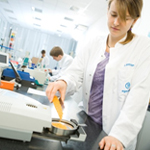 |
Quality standard for loss on drying We determine the surface dampness of the raw material prior to production. To this end, we weigh a define quantity of granulate and subject this to infrared drying. The mass loss after the test may not exceed 0.03 percent. |
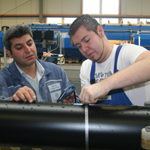 |
Quality standard for dimensions / labelling / colour During production, we measure the outer diameter, the wall thickness, the length and the ovality of the pipes. We also check the labelling and colour. These tests are conducted in addition to the automated monitoring with K1/K2 cards. Production batches that do not correspond to the specified requirements are rejected. |
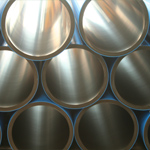 |
Quality standard for surface condition The inner and outer pipe surfaces are visually inspected during production. A backlight source is used to this end in the case of straight pipe sections, and a backlight system is employed in the case of pipe drums and coils. The production batch is rejected if sharp scoring or severe irregularities are detected in the pipe surface. |
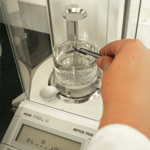 |
Quality standard for impermeability We examine raw materials and finished pipes for their material impermeability according to the buoyancy procedure. To this end, the specimen is weighed in air and in a medium with a known density and the difference calculated. Materials and production batches that do not correspond to the specified requirements are rejected. |
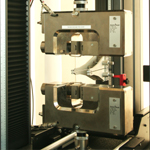 |
Quality standard for tensile properties Tensile stress at yield and elongation at fracture of standardised specimens. We elongate shouldered test bars at a constant test speed and document the tensile force, the tensile stress and the change in length. Materials and production batches that do not correspond to the specified requirements are rejected. |
Independent Tests
In addition to our own stringent tests, we also subject our products to equally demanding tests in external test institutes.
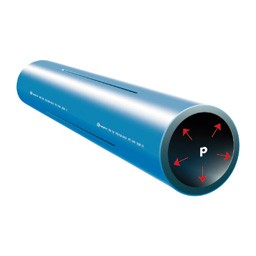 |
Notch-TestIn the Notch-Test (ISO 13479), a pipe section is notched in a defined manner and subsequently tested at a test temperature of 80°C under a test pressure load of 9.2 bar until it fractures (SDR 11, PE 100).. |
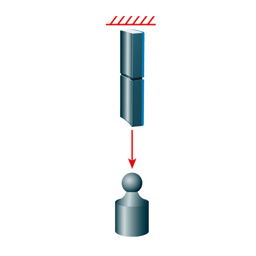 |
Full-Notch Creep-Test FNCT (ISO 16770)The Full Notch Creep Test FNCT (ISO 16770) simulates local stress concentrations. To this end, small specimens of the material to be tested are notched at a sharp angle and subjected to a constant tensile load of 4 N/mm at 80 °C (+2% Arkopal N 100) until they fracture. |
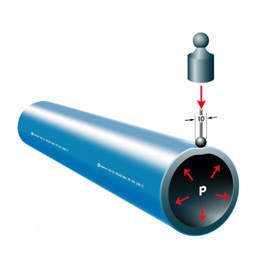 |
Point Load TestThe Point Load Test subjects a pipe to internal pressure and additionally bulges the pipe inwards with a surface stamp at a depth of penetration amounting to 6% of the outer diameter and at a test temperature of 80 °C (+2% Arkopal N 100). |
